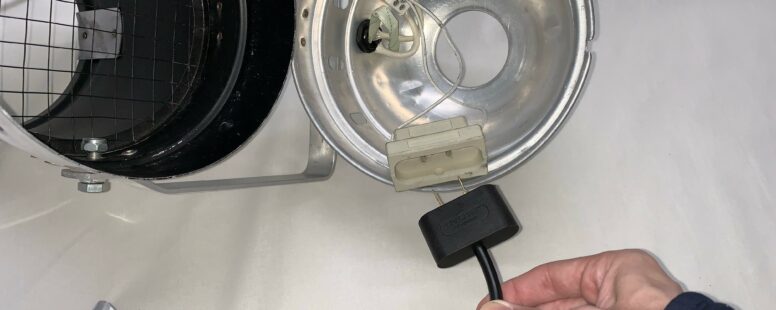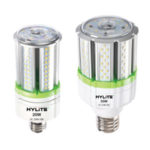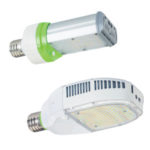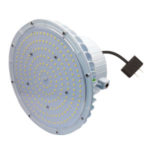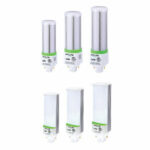Plug-and-Play vs. Hardwired LED Bulbs
Type A vs. Type B LED Lights
When it comes to upgrading lighting systems, the decision between ballast-compatible and direct-wire LED lamps is more than just a technical distinction it’s a strategic choice with long-term implications for maintenance, safety, and energy efficiency.
Fluorescent and CFL fixtures are still common in many commercial and institutional buildings. Replacing them with LEDs is a smart move, but not all LED retrofit lamps install the same way. The two primary options, known as Type A and Type B, approach retrofitting from different angles. Each offers distinct advantages, and both require careful consideration depending on your facility’s infrastructure and long-term goals.
The Plug-and-Play Approach: Type A LED Lamps
Type A LED lamps, commonly referred to as ballast-compatible or plug-and-play, are the simplest to install. These lamps are engineered to work with existing fluorescent ballasts. No rewiring is needed; remove the old lamp and install the new LED.
For a quick and hassle-free upgrade, this method truly stands out. Whether you’re working in a big office, school, or retail store, being able to replace hundreds of lamps without calling in an electrician can really help save on labor costs. Plus, it minimizes downtime and keeps daily routines running smoothly.
However, the convenience has caveats. Not all ballasts suit all Type A LED lamps. Manufacturers give compatibility lists; ignoring them can cause issues or no light. Keeping the existing ballast also means a potential failure point. If it fails, the lamp stops working, leading to maintenance calls, not just relamping.
This is the point at which the initial time savings may be offset subsequently. The continued dependence on an aging electrical component results in increased power consumption, heat generation, and ultimately higher costs. Additionally, the ballast introduces a degree of unpredictability in the calculation of long-term return on investment.
Going Ballast-Free: Type B LED Lamps
Type B LED lamps, also called direct-wire or ballast-bypass lamps, are a convenient option because they do away with the need for a ballast. To install them, you simply rewire the fixture so that the lamp sockets connect directly to the line voltage. Once set up, your fixture stays ballast-free permanently, making the upgrade straightforward and reliable.
This method offers long-term benefits. By removing the ballast from the circuit, you eliminate its energy consumption, reduce heat generation, and eliminate a frequent maintenance issue. Direct-wire LEDs also tend to be slightly more energy efficient, since they’re not working through an intermediary component.
But that efficiency comes with an upfront investment. Installation requires access to wiring, qualified personnel, and additional safety considerations. Improper installation can introduce hazards, especially in single-ended configurations where incorrect wiring may leave one side of the lamp live. This is why Type B retrofits are best handled by experienced electricians following the manufacturer’s instructions.
For facility managers, Type B may be the best choice when ballasts are nearing the end of their life or when lighting systems are being completely overhauled. It requires more work up front, but it simplifies future maintenance and improves system reliability.
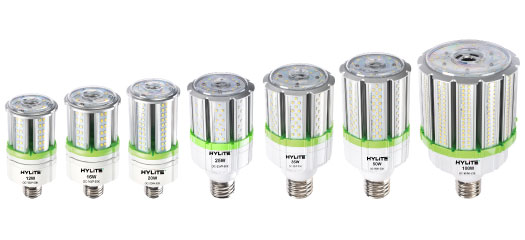
Why Not Both?
Traditionally, upgrading to LED meant choosing a path and sticking to it. If you wanted the fastest, least disruptive install, you’d opt for ballast-compatible (Type A) lamps. If you prefer long-term simplicity and energy efficiency, you’d bypass the ballast entirely with a direct-wire (Type B) system. Each route had its benefits, but both came with tradeoffs, and changing course later usually meant starting over with different lamps.
But that’s no longer the case. Thanks to multi-mode LED technology, you don’t have to choose between Type A and Type B. These hybrid, or Type A/B, lamps are designed to work with a ballast when it’s present or run on direct line voltage once the ballast is removed. It’s a flexible solution that adapts to the condition of your facility and gives your maintenance team options over time.
HyLite’s Multi-Mode Omni-Bulb is a great example of this new approach. Designed to replace 18W to 42W CFLs, the Omni-Bulb supports multiple wattages (8W, 10W, 12W, and 15W) and operates on a universal 100–277V input. It’s compatible with existing ballasts, but if a ballast fails after a year or two, there’s no need to purchase a new lamp. Your team can simply rewire the fixture and keep using the same bulb: no waste, no downtime, and no guesswork.
This dual compatibility isn’t just a convenience; it has real-world benefits, such as:
- It gives you flexibility in how and when you retrofit, making it easier to phase projects across large buildings or portfolios.
- It simplifies inventory management by letting you stock one product for both ballast-compatible and ballast-free fixtures.
- It extends the useful life of the lamp itself, even if the surrounding components fail.

Making the Right Choice for Your Facility
If your facility requires a rapid upgrade with minimal disruption and the ballasts are relatively new, a ballast-compatible lamp may be the most sensible option, especially if your team wants to avoid working with line voltage. If your ballasts are old, failing, or incompatible, direct-wire may offer a cleaner long-term solution.
But for many facility managers, the flexibility of a multi-mode lamp offers a strategic advantage. It allows you to deploy retrofits quickly and address ballast failures as they arise without discarding lamps or redoing the job.
Retrofitting lighting is rarely a one-size-fits-all project. Finding a solution that adapts to your building’s infrastructure and your staff’s capabilities is key.
Whether you go with plug-and-play, direct-wire, or a hybrid solution, the right lamp, like HyLite’s Omni-Bulb, gives you control over both your lighting and your operating costs. Contact us for pricing and delivery options.

